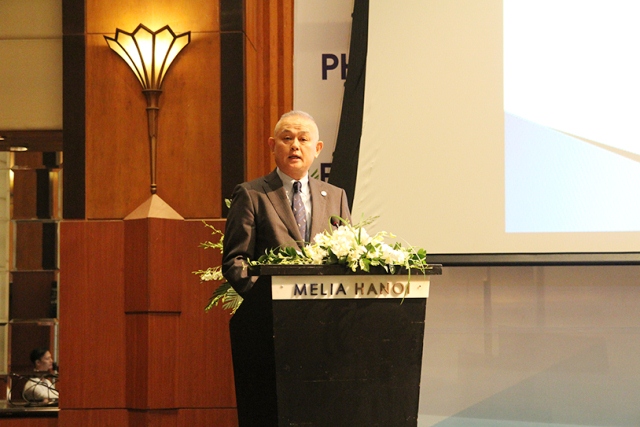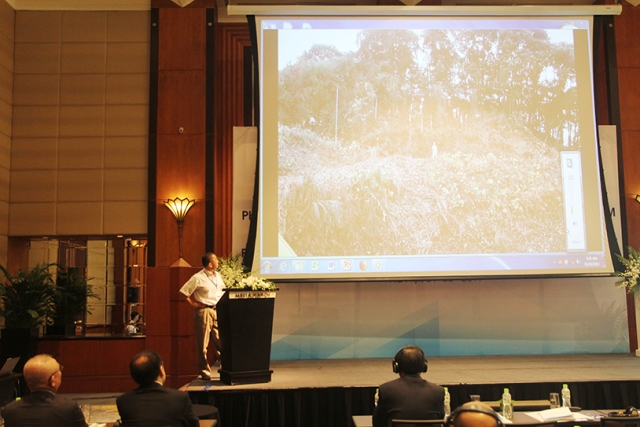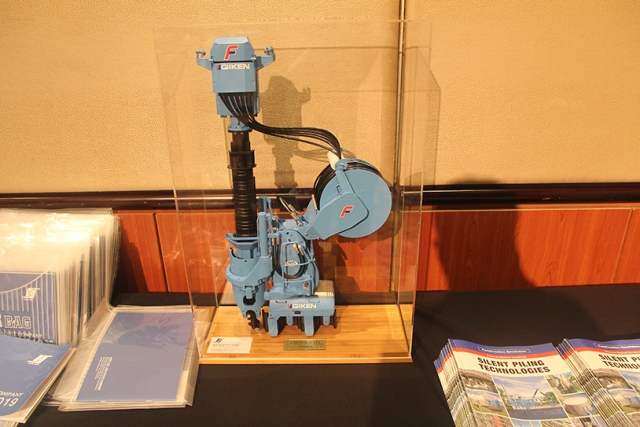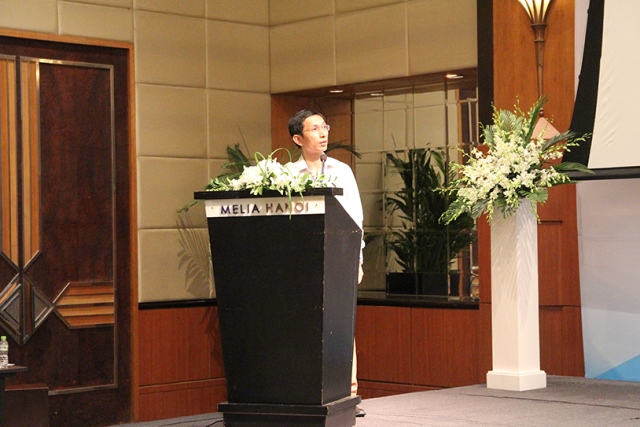Speaking at the Workshop, Deputy Minister Nguyen Dinh Toan said, Vietnam is one of the most vulnerable countries to natural disasters and climate change due to being located in Southeast Asia which is the “hurricane” area of the world.
In recent years, the Government of Vietnam has had many guidelines and policies to improve capacity in natural disaster prevention and climate change adaptation. The Prime Minister approved the National Strategy for Natural Disaster Prevention, Response and Mitigation to 2020 in Decision No. 172/2007/QĐ-TTg dated November 16, 2007 and approved the National Strategy on Climate Change in Decision No. 2139/QĐ-TTg dated December 5, 2011.
Implementing guidelines and policies of the Government, ministries and localities developed action plans with key tasks such as proactive response to natural disasters, climate monitoring, early warning and damage mitigation due to disaster risks, ensuring food security and water resources, positively response to rising sea levels suitable for vulnerable areas…
The MoC hopes Kochi province and Japanese businesses to share measures in preventing, mitigating and handling nature disasters and strengthening the development of Vietnam – Japan cooperation. Besides that, the Workshop aimed to establish a network of trade cooperation, professional exchange, science and technology transfer and investment between Vietnamese and Japanese enterprises in the field of infrastructure development and disaster reduction.
Kochi province’s experience in disaster prevention
Kochi faced many large – scale floods and storms that damaged its local facilities. In response to natural disasters, the Kochi provincial government has adopted both hard measures and soft measures such as river improvement, flow management, construction of 6 dams, and implementation of slope protection measures for roads, prevention rocks falling when heavy raining.

Representative of Kochi’s Disaster Control Department, Mr. Seiji Nakaoka gave an overview
of flood and storm response in Kochi province.
When floods and storms occur, Kochi’s Disaster Control Department will responsible for issuing alerts to the district level, collecting damage information and implementing disaster prevention measures according to four levels of availability. Besides that, a website has been developed that provides basic information on disaster prevention such as rainfall, river level, sea level, dangerous level information of landslides, and actions to prevent natural disasters.
Three outstanding disaster prevention products of Kochi businesses
Attending the workshop, 3 Japanese enterprises, Osasi Technos, Chikami Miltec and Giken Seisakusho introduced in turn the outstanding disaster prevention support products of Kochi.

Representative of Osasi Technos enterprise introduced the disaster monitoring system.
Firstly, Osasi Technos introduced a disaster monitoring system including measuring devices, telecommunications equipment, cloud computing services and warning devices. In particular, the measuring devices will investigate and survey the factors of precipitation, water level, inclination, deformation, cracking of rock...
Disaster prevention data will be updated via cloud computing system, before issuing alerts to people via email or siren. Currently, Osasi Technos has implemented many disaster monitoring projects in Japan and abroad such as Thailand, Sri Lanka...
Chikami Miltec has introduced methods to support soft soil treatment. In particular, Chikami Miltec's wick-absorbent products are very friendly to the environment because they are produced from natural materials such as corn, sugarcane, biodegradable and no hinder the construction of underground works in the future.
In protecting the slopes, Chikami Miltec has introduced Takino mats to prevent erosion, protect slopes and create conditions for natural plants growing due to increasing soil fertility.

A Giken Seisakusho enterprise’s disaster prevention device brought to the Conference.
Giken Seisakusho enterprise introduced Implant structure product with steel pillars and Larsen poles that deeply pierced and bonded into a unified body with the ground, especially suitable for dealing with strong earthquakes, overcoming consequences of landslides, pressing piles to prevent landslides, building emergency bridges when natural disasters occur. Currently, the Implant method of Giken Seisakusho has appeared in 30 countries in the world.

Dr. Vu Thanh Trung - Institute of Science and Technology (Ministry of Construction)
presented issues and measures to mitigate natural disasters in Vietnam.
On Vietnamese side, Dr. Vu Thanh Trung - Institute of Science and Technology (Ministry of Construction) presented issues and measures to mitigate natural disasters such as reinforcing tiles roof, straw roofs, fibro cement roofs; reinforcing the door system, protecting the corners, edges, roof edges.
For newly built houses, people often prevent natural disasters by architectural solutions, taking advantage of the terrain, arranging the ground, selecting the best shape of the storm-resistant roof, reinforcing the covering wall and foundation, awnings, or parts attached to the building.
Prof. Dr. Tran Thanh Tung – ThuyLoi University generalizes coastal disasters (storms, tropical depressions, surges, erosion, saline intrusion) and solutions for coastal provinces in Central Vietnam such as reinforcing flat surface, building coastal safety corridors, breakwaters, horizontal embankments, artificial islands with sand, protecting sand sources...
Source: Bao Xay dung
Translated by: Mai Anh